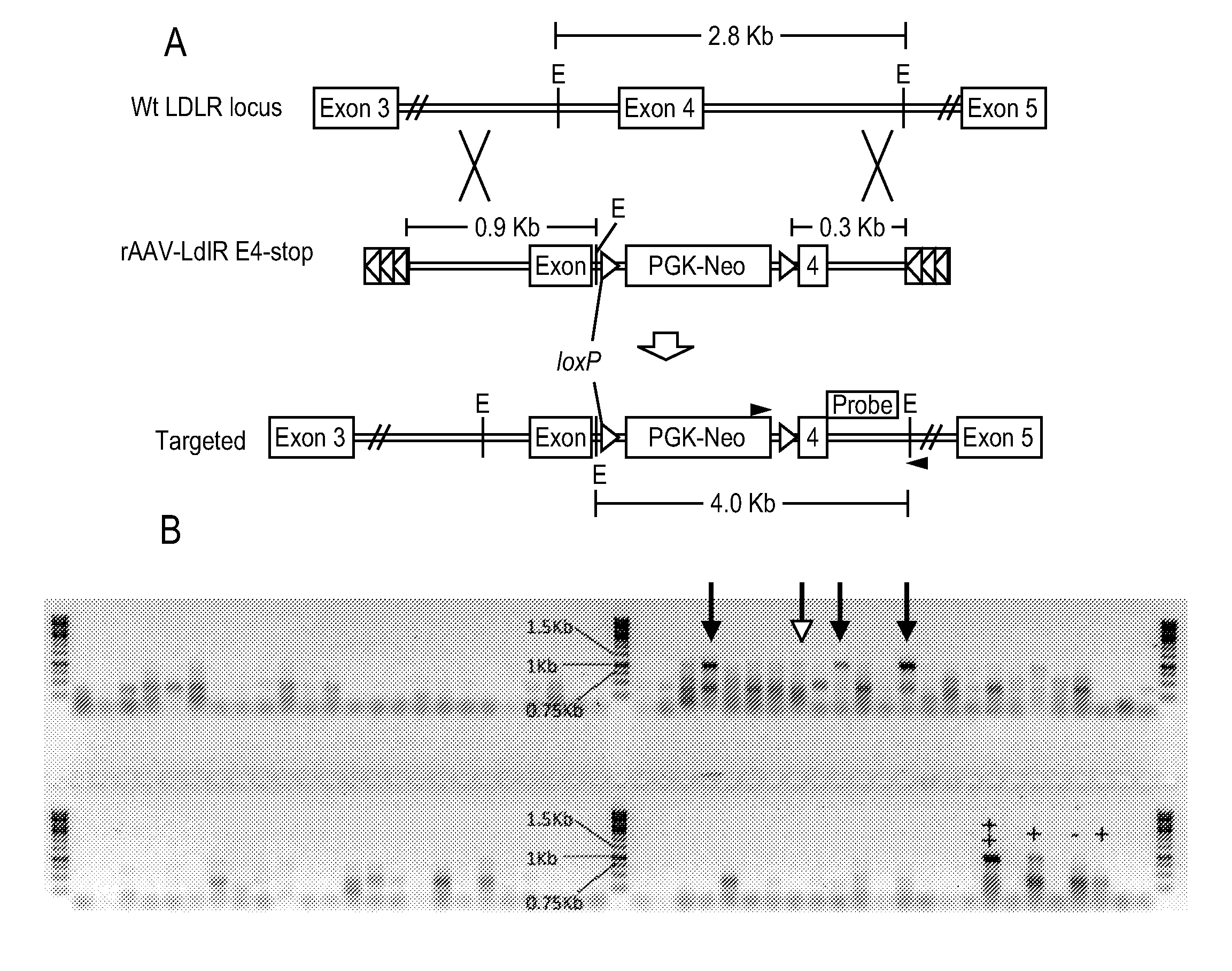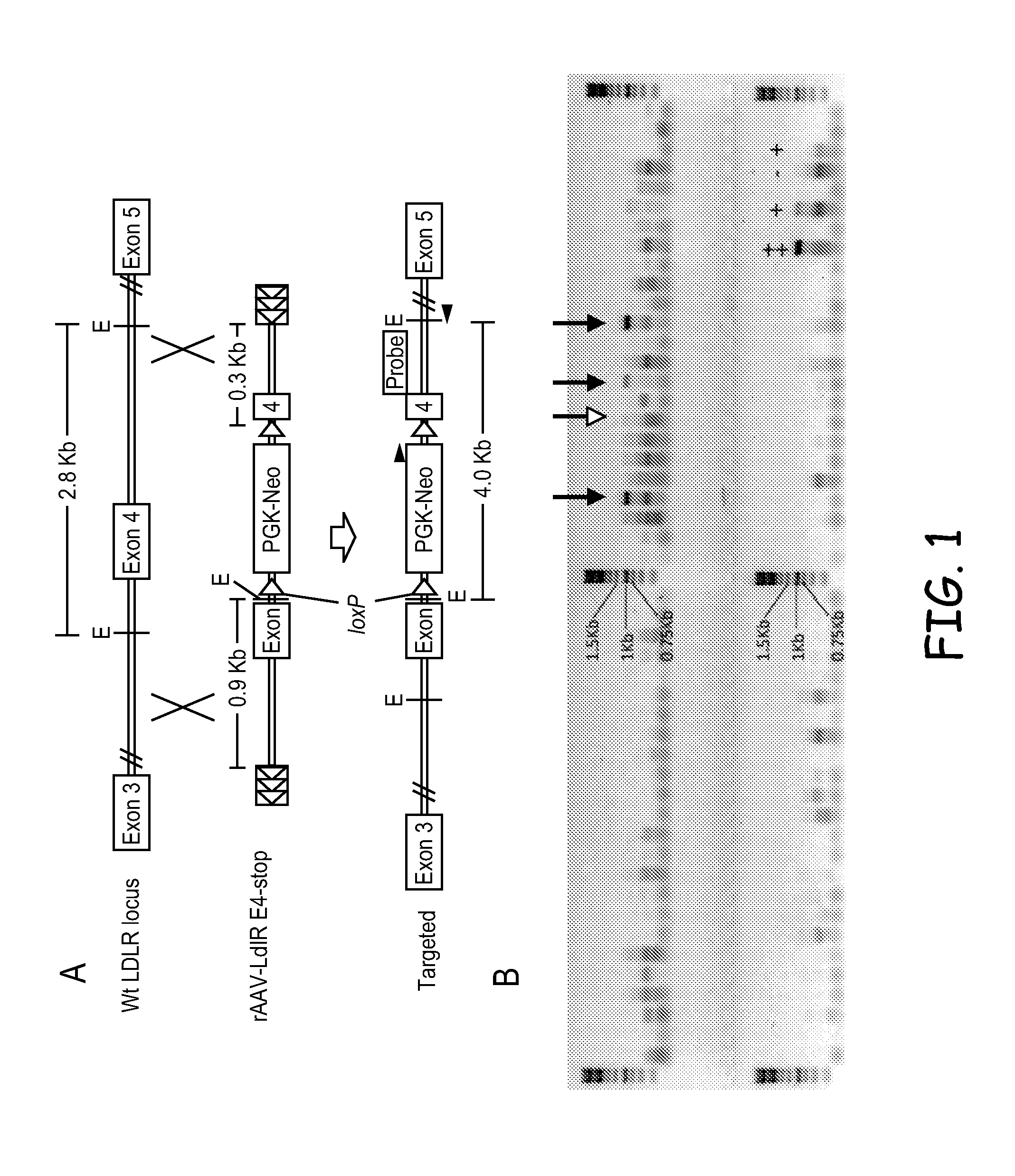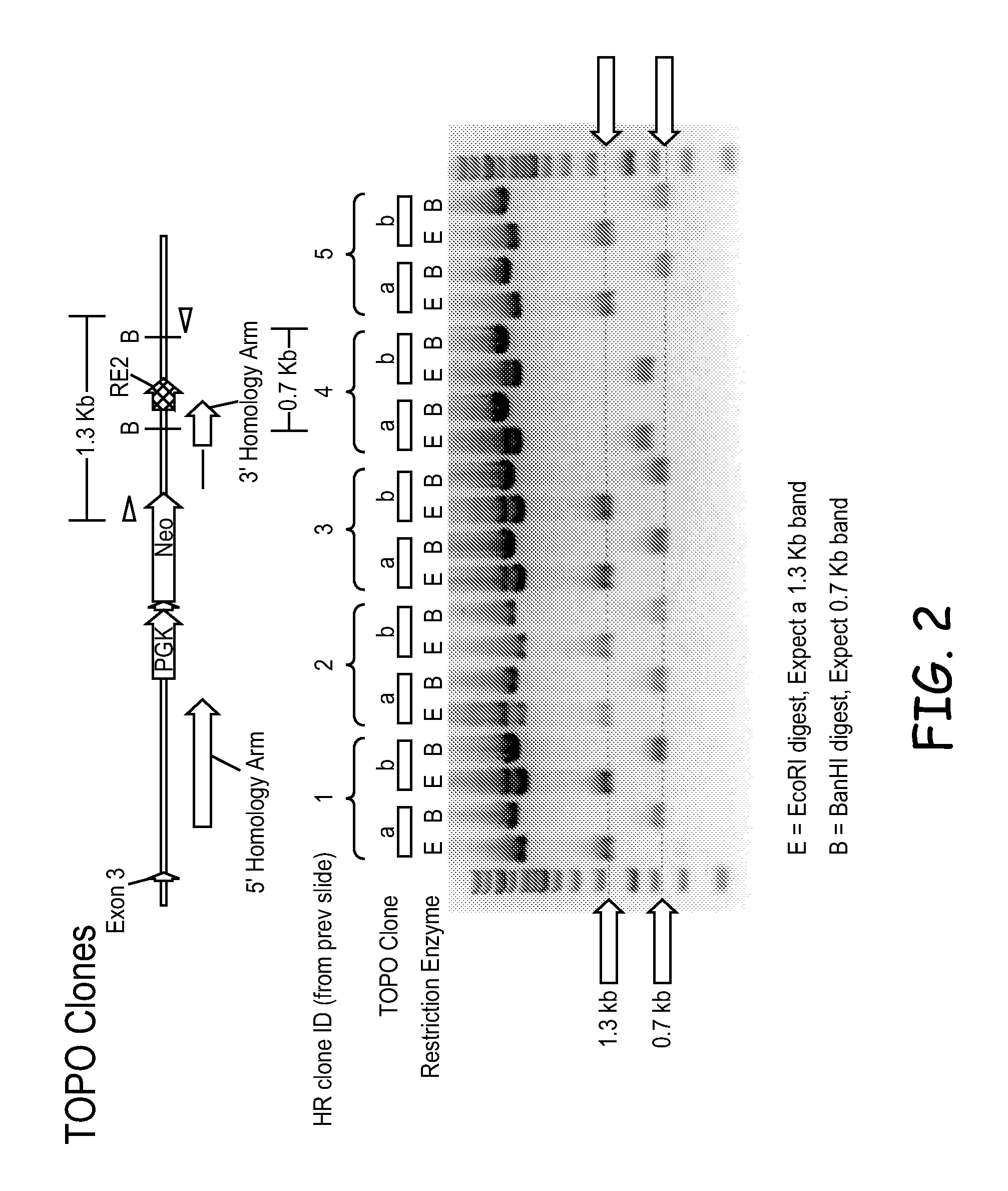Methods and materials for producing transgenic artiodactyls
a technology of artiodactyl and transgenic artiodactyl, which is applied in the field of transgenic artiodactyl production, can solve the problems that the art of transgenic artiodactyl cloning generally lacks a consistent and robust technique for making stably transfected swine cells, and achieves the effect of preventing expression of any functional protein and preventing expression of any protein
- Summary
- Abstract
- Description
- Claims
- Application Information
AI Technical Summary
Benefits of technology
Problems solved by technology
Method used
Image
Examples
Embodiment Construction
[0021]One embodiment of the invention is a method of transfecting an artiodactyl cell. A first group of artiodactyl cells may be treated to introduce an exogenous gene and then mixed with a second group of artiodactyl cells that have not been so treated. This process has been observed to produce significant efficiencies and reproducibility. A series of working examples are set forth below, followed by a more detailed overview of this embodiment.
[0022]The working examples are also embodiments of the invention. These examples describe stably transfected swine cells made with various transformations. These cells may be used to make transgenic animals, which are useful for many purposes including animal models of human diseases and conditions and sources of tissue.
Hypercholesterolemia Swine Model: Transgenic Pigs with LDLR Gene Modification
[0023]Cardiovascular disease is a leading cause of death and dysfunction in the United States, with coronary artery disease being a major contributor...
PUM
| Property | Measurement | Unit |
|---|---|---|
| molecular weights | aaaaa | aaaaa |
| molecular weights | aaaaa | aaaaa |
| molecular weights | aaaaa | aaaaa |
Abstract
Description
Claims
Application Information
 Login to View More
Login to View More - R&D
- Intellectual Property
- Life Sciences
- Materials
- Tech Scout
- Unparalleled Data Quality
- Higher Quality Content
- 60% Fewer Hallucinations
Browse by: Latest US Patents, China's latest patents, Technical Efficacy Thesaurus, Application Domain, Technology Topic, Popular Technical Reports.
© 2025 PatSnap. All rights reserved.Legal|Privacy policy|Modern Slavery Act Transparency Statement|Sitemap|About US| Contact US: help@patsnap.com



